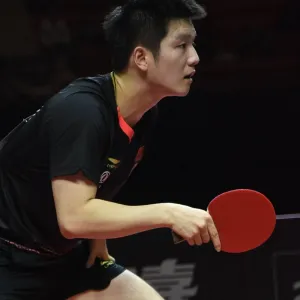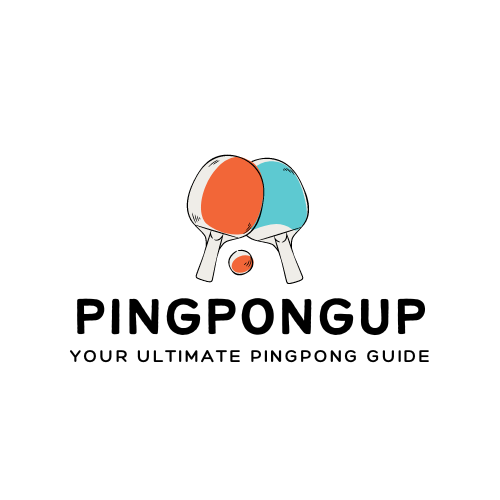Well, if you are a sports maniac willing to start playing table tennis in particular, we have you all covered. As in this article, we will provide you with the basics of table tennis.
Interestingly, table tennis, also commonly termed ping pong, is the third most played game in the U.S and also one of the most likable sports in the world due to its accessible nature. A tiny indoor area is needed for table tennis to play the game. Anyone can play irrespective of age, physical fitness, and health condition.
There are some essential components that, if you know, will help you excel in this game.
-
Ready/Neutral Stance
The easiest way to distinguish between an amateur and an expert is to see how they stand during the game. It is an essential skill to practice table tennis. In adopting a ready stance, the player should slightly crouch in the forward direction with his legs distanced apart and the knees slightly bent forward so that all pressure comes on the edge of the foot. This ultimately helps the player to make quick transitory moves during the game. Also, read the Best Table Tennis Shoes.
The ready stance never changes in a game for a player. The figure below gives you the idea of a neutral stance.
Uni over, now to start organising the last 4 years worth of resources into 1 place.
Starting with my table tennis resources. I found the body stance one useful for setting my yr10’s up on a guided discovery task to find the correct position pic.twitter.com/OvCV15GZPt
— Paige Dillon (@MissDillon20) May 27, 2020
-
Ping Pong footwork
 Mainly two types of foot works are executed during the game, the side to side and in and out. The idea is to keep the pressure on the toes, so that body weight is always in a forward position, giving ease to swift foot movements. Also, read the How to Assemble a Table Tennis Racket?
Mainly two types of foot works are executed during the game, the side to side and in and out. The idea is to keep the pressure on the toes, so that body weight is always in a forward position, giving ease to swift foot movements. Also, read the How to Assemble a Table Tennis Racket?
- Side-to-side footwork is executed by the player when he is close to the table. Always remember to use your outer side foot to move left or right as per the direction of the incoming ball.
- In and out footwork is used whenever the player has to return a short service ball. To make a return, the player has to move the body forward to reach the ball and quickly move back to the ready or neutral position.
- Cross Over Footwork is used when we have to return the ball faster. As the name indicates, the player crosses his legs to reach the ball.
So, as we have talked a bit about the footwork, let us talk about where the player should stand. In-game, as we all know, the player never knows from where the ball is coming, so standing too close and center of the table is a bad idea. In this way, a minimal reaction time will be there to return the ball and can lead to a miss. Also, read the Benefit of Playing Table Tennis.
The best way is to keep your bat in the center of the table. For right-handed players, this means standing at the left of the center; for left-handed players, it will be slightly to the right side.
-
Bat/Hand/Wrist
 The wrist and bat position is the final component of a ready stance. A player always keeps the top edge of the bat towards the opponent. This enables the player to play in any direction, whether backhand, forehand, or on-demand. Most notably, in table tennis, the bat is considered to be an extension of your forearm, so the whole weight of the forearm is presumably on the bat. Also, read the Fun Facts About Table Tennis.
The wrist and bat position is the final component of a ready stance. A player always keeps the top edge of the bat towards the opponent. This enables the player to play in any direction, whether backhand, forehand, or on-demand. Most notably, in table tennis, the bat is considered to be an extension of your forearm, so the whole weight of the forearm is presumably on the bat. Also, read the Fun Facts About Table Tennis.
-
Headings
Headings, as the name suggests, combine table tennis and soccer. This game is played on a regular tennis table, except player heads are used to return the shots. Interestingly this hybrid was invented by two German players accidentally. The game’s rules are pretty the same as table tennis, except that players’ hands and bodies can touch the table, which is prohibited in the regular table tennis sport. Over the years, this sport has become extremely popular among youngsters due to its edgy nature. It gives a hybrid of game and fight. Once you master your regular game, you can always move a step higher with this one. Also, check the How to Play Smash in Table Tennis?
Conclusion:
Every sport has its health benefits, but table tennis does have an additional edge over them as it improves;
hand-to-eye coordination, which is highly beneficial to practice in growing kids.
The player’s reflexes are enhanced as the distance is shorter, and so is the time to return the shot, consequently increasing mental alertness. Also, read the How to Choose Ping Pong Paddle?
It strengthens your core muscles and resolves twisted ankle and spinal cord issues.
It activates neurons of the brain which improves mental strength and helps retain long-term events in the memory.

